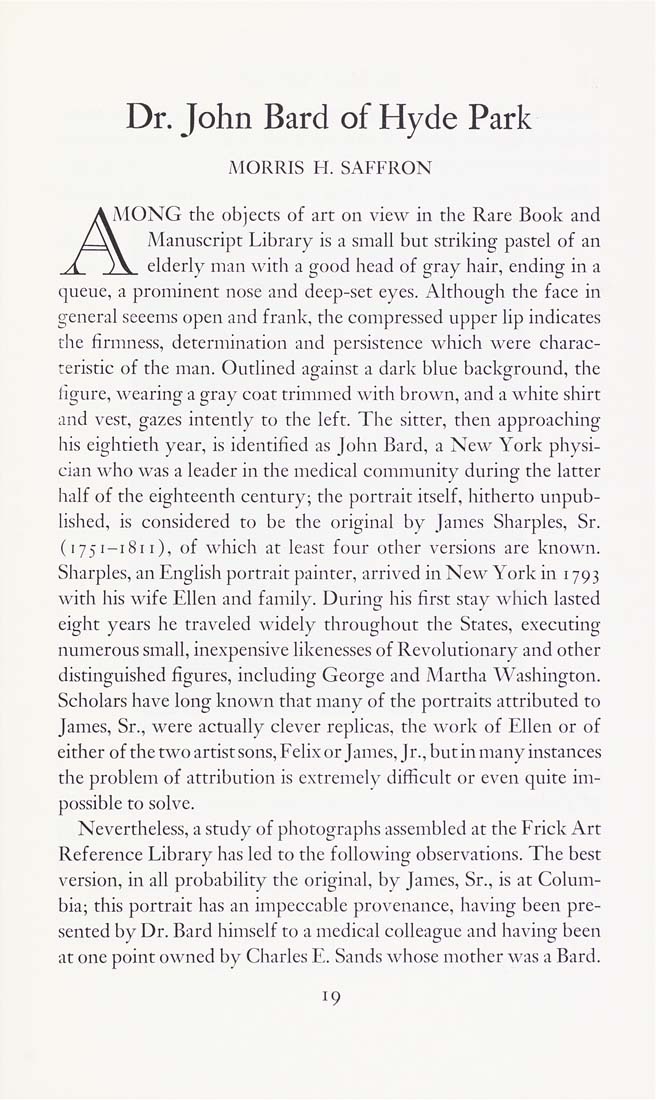Columbia Library columns (v.32(1982Nov-1983May))
(New York : Friends of the Columbia Libraries. )
|
||
|
|
|
|
| v.32,no.2(1983:Feb): Page 19 |

Dr. John Bard of Hyde Park MORRIS H. SAFFRON A MONG the objects of art on view in the Rare Book and /-a\ iManuscript Library is a small but striking pastel of an A )\ elderly man with a good head of gray hair, ending in a queue, a prominent nose and deep-set eyes. Although the face in general seeems open and frank, the compressed upper lip indicates the firmness, determination and persistence which were charac¬ teristic of the man. Outlined against a dark blue background, the figure, wearing a gray coat trimmed with brown, and a white shirt and vest, gazes intently to the left. The sitter, then approaching his eightieth year, is identified as John Bard, a New York physi¬ cian who was a leader in the medical community during the latter half of the eighteenth century; the portrait itself, hitherto unpub¬ lished, is considered to be the original by James Sharpies, Sr. (1751-1811), of which at least four other versions are known. Sharpies, an English portrait painter, arrived in New York in 1793 with his wife Edien and family. During his first stay which lasted eight years he traveled widely throughout the States, executing numerous small, inexpensive likenesses of Revolutionary and other distinguished figures, including George and iMartha Washington. Scholars have long known that many of the portraits attributed to James, Sr., were actually clever replicas, the work of Ellen or of either of the two artist sons, Felix or James, Jr., but in many instances the problem of attribution is extremely difficult or even quite im¬ possible to solve. Nevertheless, a study of photographs assembled at the Frick Art Reference Library has led to the following observations. The best version, in all probability the original, by James, Sr., is at Colum¬ bia; this portrait has an impeccable provenance, having been pre¬ sented by Dr. Bard himself to a medical colleague and having been at one point owned by Charles E. Sands whose mother was a Bard. 19 |
| v.32,no.2(1983:Feb): Page 19 |







